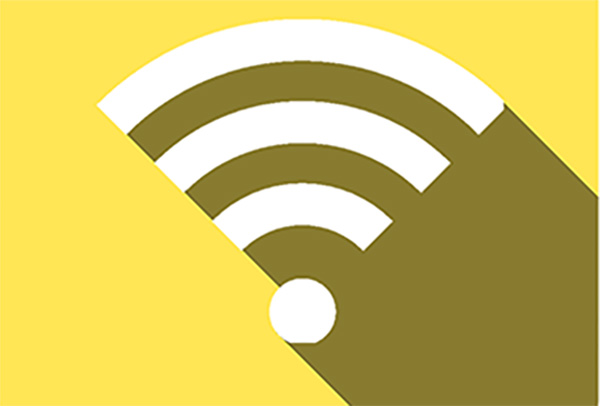“These days almost everyone has at least one and sometimes several mobile devices that want to connect to the network to check their email or update an app. All of these devices consume network bandwidth, often drowning out and competing with each other in their attempts to connect,” observes Rolf Springfeldt, head of the Infrastructure and Operations Unit at University IT Services (UIT).
UIT is tasked with improving and upgrading the wireless network across the entire university. The work is ongoing and given its scope, it will take a considerable time to complete.
That said, UIT has made significant progress in replacing aging equipment, a continuous process of IT system life-cycle management. A number of necessary improvements and amendments have also been identified. UIT is involved in all newbuilds and major renovations in order to ensure that adequate network infrastructure is installed.
When Uppsala University decided to begin installing wireless networks in the early 2000s, work was mainly confined to student areas with investment from central funds.
When it came to installing Wi-Fi in departmental premises, however, equipment was based on the needs and resources of each organisation, meaning that we now have a great variation in wireless coverage and quality in the University’s various buildings.
Network fault reports are common
A question commonly asked by members of staff is: When can I get better Wi-Fi?
“We receive a great many inquiries and reports of network problems, a large proportion of which relate to wireless connection. While a fault may be due to all sorts of things, the problem is usually found in the user’s own computer, telephone or other connected equipment,” explains Springfeldt, who notes that, while IT Support can troubleshoot the fault itself, they are not always able to resolve the underlying cause.
One common issue with Wi-Fi access is poor coverage in certain areas. This may be due to the distance to the nearest access point, or that too many devices are attempting to connect to the same access point. Ventilation ducts, thick walls, insulated glass, smart building materials, corners, renovations and even human bodies can also weaken the signal.
Problems with poor Wi-Fi coverage can be resolved by installing more access points or moving existing ones.
“Some of these measures are part of our improvement work but sometimes this work can be more complicated that it appears,” says Springfeldt.
Division of responsibilities
- University IT Services (UIT)
UIT is responsible for delivering and administering active network equipment, i.e., equipment used to configure and update the functionality of the network, as well as for ensuring that the wireless network is secure and reliable.
- Campus Management Organisation and Landlords
Responsible for the necessary cables to connect an access point to the existing network. All wireless network access points are connected by ethernet cable to the same equipment that provides the wired network. If amplification is required, new or extended network cabling will normally need to be run to the location where the new access point is to be located.
In some cases, a power supply cable will also need to be run to the new access point. These are ordered and installed in the manner prescribed for each campus area or equivalent. Of course, the University does not own the buildings and any changes will usually need to be approved by the property owner. Many of the University’s facilities are also housed in listed buildings, which may further complicate and add to the cost of new installations and upgrades.
“Naturally, we collaborate with all facilities managers but we are not responsible for deciding when work can be carried out, nor for any costs arising for installing new equipment for the physical network or new access points,” says Springfeldt.
Wired network for stability
The wired network in the University’s buildings allows staff and students to connect devices by cable, thus solving the problem of poor Wi-Fi coverage. A wired connection may be a requirement for certain functions, particularly when installing new IT equipment.
If there are no network ports in the workplace, ordering, installation, etc. should be done in accordance with Campus Management Organisation or equivalent guidelines. Existing network ports may be unpatched, meaning that they are not actually connected to the network.
As long as these ports are undamaged and cabling is installed in compliance with requirements and specifications, UIT can assist with connecting and activating the port.
IP telephony sockets sometimes look like network ports but even if the plug from the cable running from the fits the socket, they cannot generally be used for data network connections.
If you come across a port that is not working, your first point of contact is always IT Support.
